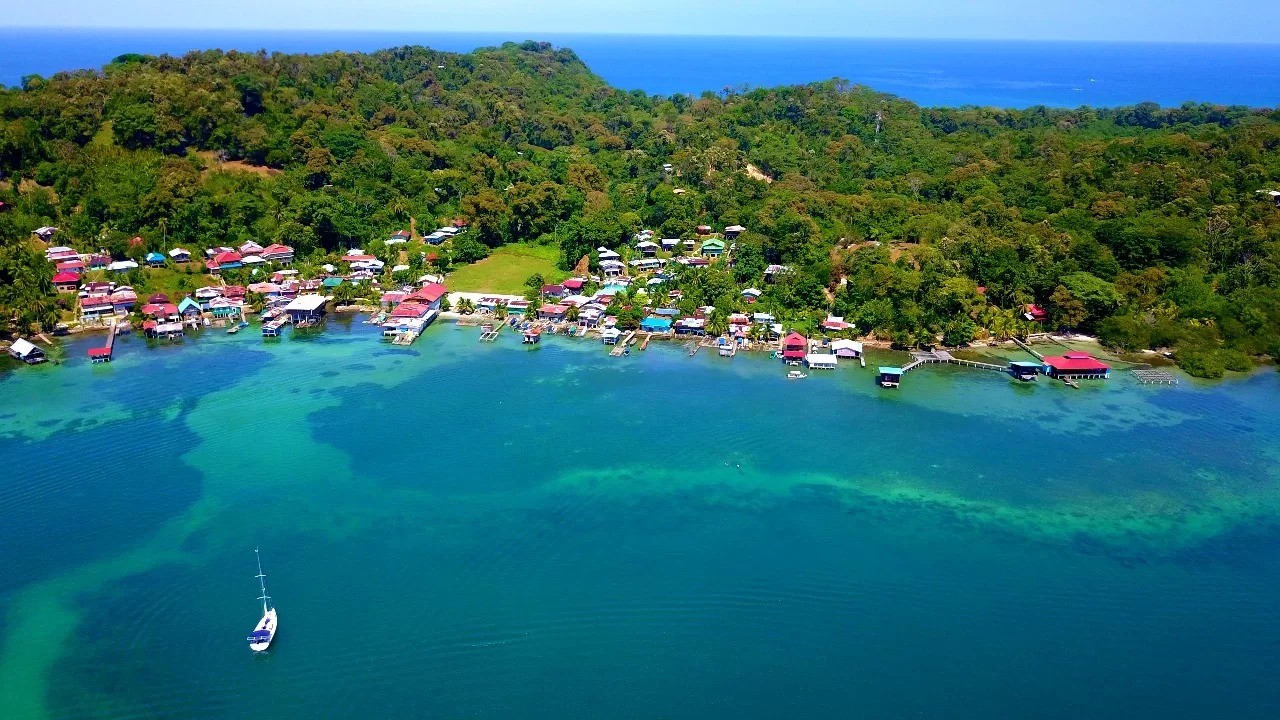It took me close to two years of living in Japan before I lost my onsen-virginity. By this time, I’d acculturated to the point of dreaming of sushi. I’d joined a taiko (traditional drumming) dojo, attended incense appreciation classes, and learned to initiate conversations with references to the state of flowers. “The wisteria are early this year, no?” I’d offer, or, “The sakura (cherry blossoms) are gorgeous, but I am missing the ume (plum blossoms).”
Read On Meeting locals and travelers makes for a better expat experience
Yet the attraction of onsen, or natural hot springs, eluded me. In Japan, they are an obsession. People choose where to holiday based on the temperature of local onsen, the views they offer, their mineral admixture. They crop up in woodblock paintings, poetry, and literature with the punctuality of a shinkansen bullet train.
One day I found that reading Matsuo Basho, the haiku grand master, made me nostalgic for onsen, even without having experienced one.
Over time I grew curious—perhaps because they’re nearly ubiquitous. The Japanese archipelago is the world’s most geologically active region, home to more than 100 volcanoes, which explains why it feels as if there is an onsen for every bowl of miso.
One day I found that reading Matsuo Basho, the haiku grand master, made me nostalgic for onsen, even without having experienced one.
“After the bath, the warmth lingers,
but at night,
the skin turns cold.”
It is difficult to articulate what it is about these hot springs that has gained them a central place in the national psyche. Much of Japanese culture and aesthetics is steeped in Zen Buddhism, which is, by nature, ineffable. But from what I gathered, the onsen experience transcended the basics of a hot bath. It was metaphysical.
I developed a theoretical competence in talking about onsen, to the point where I could wax on about how they embodied the non-duality of self and nature, allowing the bather a sensory-spiritual focus that soothed gadget-addled brains into submission to the moment.
Yet it was all just talk as long as I refused to submerge myself in one. The main reason for my reluctance was the enforced nudity that was standard operating procedure. No material, including that of a bathing suit, is allowed to come between the melding of spirit and nature these bubbling oases promise.
As an Indian, the idea of prancing about in my birthday suit in front of a bath-full of strangers was culturally challenging.
The vast majority of onsen are, mercifully, separated by gender. Still, as an Indian, the idea of prancing about in my birthday suit in front of a bath-full of strangers was culturally challenging. I cannot, for example, recall ever having seen either of my parents naked. Middle-class Indian homes, like mine, are not private. They heave with odd-job men, stray aunts and unannounced neighbors, so we learn from an early age to only part with our clothes behind locked doors.
As a travel writer, on the other hand, I needed to practice what I preached. And it was typical of my sermons to advocate for allowing travel to enlarge one’s zone of comfort. Filled with the zeal of the good-traveler pulpit I decided to double the challenge by taking on not only onsen, but snow. I hated the cold. I had never skied. The winter, as far as I was concerned, was meant for staying indoors, sipping on chai, and chomping hot-off-the-stove samosas.
So, for the Christmas holidays, I booked my family at the Hilton in Niseko, a ski resort town in Japan’s northern Hokkaido prefecture. Known for its pristine, powder snow, the region draws skiers from around the world. It was not a cheap trip, but the hotel boasted an outdoor onsen.

My plan was to leave the skiing to my husband and boys, while I took the plunge, literally, into the world of onsen, meeting my twin foes of nudity and cold head on.
Nothing quite prepared me for the quiet of the snow-bound landscape as our train, which we boarded in Hokkaido’s capital, Sapporo, pulled into the station. The heavy quiet of it “seemed to roar deep into the earth.” I was reading Nobel Laureate Yasunari Kawabata’s classic, Snow Country, set in an unnamed snow-bound onsen town, as preparation for our visit to Niseko.
There was going to be no avoiding the onsen. In coming here, I had jumped off a cliff and the fall was only going to end with me nude on this late December night in the great outdoors of northern Japan.
His descriptions crowded my mind as we drove to the hotel, breathing in the icy air with “voluptuous astonishment.” It was 17 degrees below zero (celsius) and the mountain sides seemed veiled in faint smoke. Once inside the hotel, our muscles began a slow thaw.
We had barely unpacked when the rest of the family disappeared into the ski rental shop, and I began to feel something akin to panic at the realization that there was going to be no avoiding the onsen. In coming here, I had jumped off a cliff and the fall was only going to end with me nude on this late December night in the great outdoors of northern Japan.
But this being Japan, taking a bath in a hot spring was never going to be as easy as shrugging off one’s clothes and stepping in. Activities that cause little stress in other countries—making a cup of tea or sticking cut flowers in a vase, for instance—take epochs to perfect in Japan.
My Japanese teacher has been taking classes in learning how to wear a kimono for over a decade, and says she has years more to go before she can claim competence. Even taking in Japan’s famed cherry blossoms in the spring has a codified procedure.
In Tokyo’s Yoyogi Park I was once handed a leaflet published by the local authorities titled, “Mind your Manners.” It warned bloom gazers not to start fires, stand on the roots of the trees, touch the trees, pluck the blossoms, litter, or be annoying.
But compared to onsen etiquette, cherry blossom viewing is, well, a walk in the park. I’d read of some onsen turning away non-Japanese all together, ostensibly out of fear that they might disrupt the delicate harmony of the communal bathing experience. Although being barred entry was very rare, navigating an onsen could be intimidating for newbies as the great number of reddit threads on the subject attest.
The list of onsen dos and don’ts is lengthy. But I’d prepared well. I knew that women’s changing rooms are usually designated using a red curtain or signage, and the ones for men are in blue, so that even the kanji-ignorant can distinguish the two. Shoes, as in many indoor spaces in Japan, are taken off before entering the changing areas and exchanged for slippers.
Once inside the changing room, one fully disrobes and stores all belongings, including mobile phones, in designated lockers. Then, armed with nothing but confidence, the would-be bather strides into the hot spring zone—as bare as a newborn.

Even towels are prohibited, save a tiny washcloth, which provides less coverage than a fig leaf. Moreover, said washcloth must never touch the waters of the onsen, but remain perched atop the soaker’s head at all times. The purpose of the washcloth is to prevent the dizziness that can occur when the body gets overheated (the tiny towel is thus often soaked in cold water beforehand).
Then there were the tattoos. One of the more widely known onsen strictures is the prohibition of body ink. In Japan, tattoos have long been associated with criminals and yakuza mobsters, who ink themselves as a sign of gang membership. This aversion holds true even in public swimming pools. The local pool I took my children to in Tokyo, for example, had signs ordering swimmers to cover up tattoos with a rash guard to avoid “the awful feeling of other users and children.”
Other “don’ts” included chatter, untied long hair, selfies, swimming, splashing, and staring. One’s eyes always needed to be turned inwards towards locating inner peace, rather than on ogling other bather’s intimates. As for the “dos,” chief amongst these was the need to bathe thoroughly before entering the baths, which is not uncommon for public bathing facilities.
I breathed in the white cold air and slipped slowly into the 42- degree waters of the onsen. My muscles melted, along with my stress.
Onsen are not for cleansing the body, as much as the soul. For physical cleanliness, running water and buckets are always provided just past the changing rooms. And it is here where one must slough off any dirt from the body with showy displays of rigor. The pre-onsen cleaning ritual is the preferred arena for virtue signaling in Japan.
The longer one takes scrubbing every inch of skin, the more one garners the approval of other bathers, for it demonstrates concern for ensuring that the onsen waters remain uncontaminated for all. Back at the Hilton, I followed this etiquette to the T. Shoes off, slippers on, clothes off and stored away, hair tied up, slippers put away, washcloth grabbed and off I went to wash up.
I scrubbed off in the shower, then took a dip in the indoor pool, fed with the same hot spring waters as the onsen. Once heated to the point of being able to gird my metaphorical belt enough to brace the elements, I pushed open the door and stepped into the freezing night.
Walking naked towards the outdoor onsen, on snow, felt mad and liberating. A rush of endorphins had my skin dancing. I breathed in the white cold air and slipped slowly into the 42- degree waters of the onsen. My muscles melted, along with my stress.

The onsen was surrounded by pine trees in glistening coats of white. I looked up into the night sky and Kawabatta whispered to me: “There was no moon. The stars, almost too many of them to be true, came forward so brightly that it was as if they were falling with the swiftness of the void.”
What is it with water and conversion? In that moment, I was a born again onsenite. Henceforth I would be a slave to bubbling hot water and the views enjoyed from within their embrace. After all my imaginings to the contrary, being naked proved to be no big deal. No one even glanced in my direction, and I made sure to return the favor.
Being self- rather than other-oriented, the onsen experience was profoundly meditative. The combination of the bright snow, the dark sky and the sensation of having lost my body somewhere far away, had me at the cusp of a life-changing epiphany. But just before I fully grasped the insight, a gaggle of southeast Asian ladies giggled their way into the waters, dispelling my emerging revelation.
The women chattered, and possibly even splashed. I retreated to a corner of the bath from where I gave them black looks, without actually looking at them, ever cognizant of the “no eye contact” norm. Some of us follow the rules, I thought to myself sniffily.
My acculturation was finally complete.
Read More on This Season’s Best Travel Buys
———————
Pallavi Aiyar is an award-winning foreign correspondent and the author of seven books, including, most recently, Orienting: An Indian in Japan. Follow her on X.










